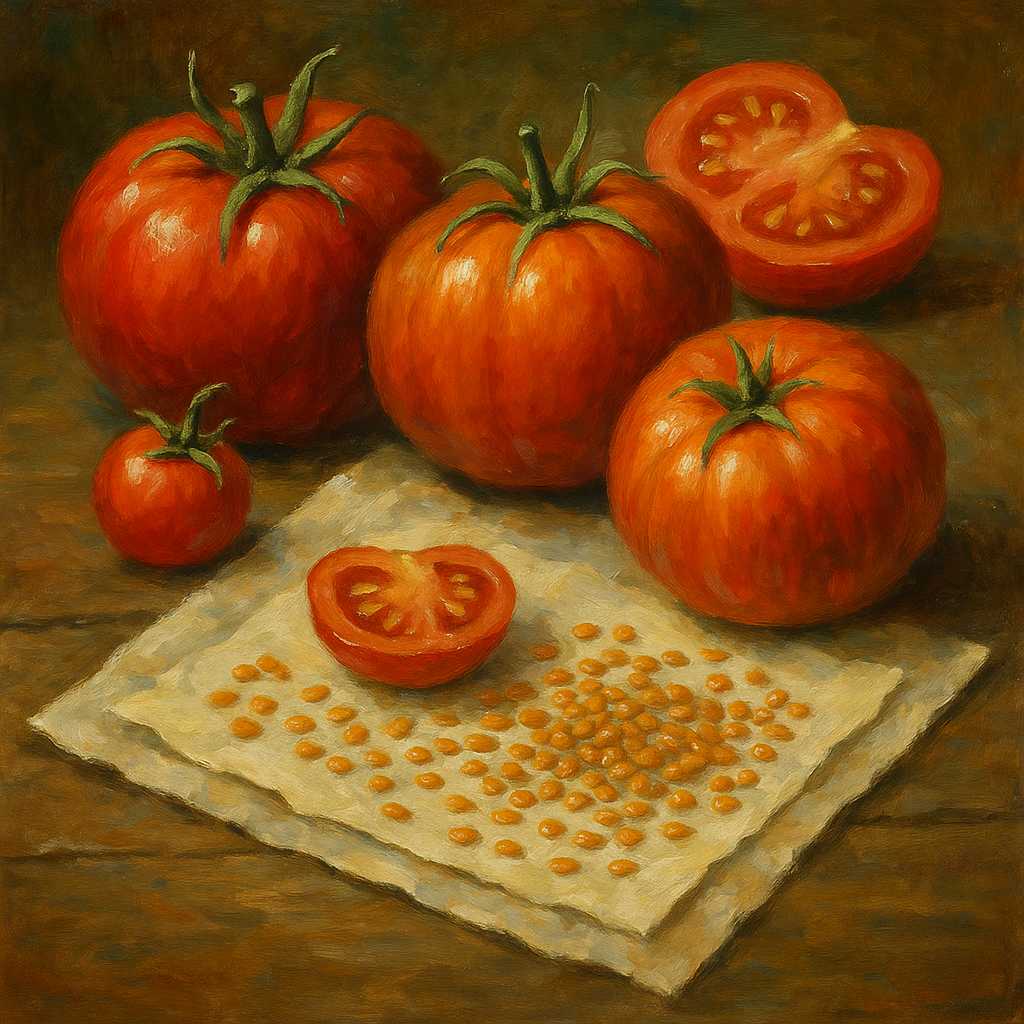In Central Florida, where humidity, heat, and pests are year-round challenges, saving tomato seeds the traditional Amish way (like placing slices in a jar of soil) can lead to mold, rot, and disappointment. Instead, here’s a proven method that’s simple, sanitary, and gives you clean, viable seeds ready for next season.
Step-by-Step Guide: Fermentation Method
This method mimics what happens in nature when a tomato falls to the ground and slowly ferments—removing the gel that prevents sprouting.
What You’ll Need:
Fully ripe heirloom or open-pollinated tomato
A clean glass jar or bowl
Filtered water
Coffee filter or paper towel
Strainer and spoon
Labeled envelope or paper packet for storage
Step 1: Scoop the Seeds
Cut your tomato in half and scoop out the seeds with the surrounding gel into your jar or bowl.
Step 2: Add a Splash of Water
Add a tablespoon or two of water. This will help start the fermentation process.
Step 3: Let It Ferment (But Not Cook!)
Place a coffee filter or towel over the jar and set it in a cool, shaded indoor spot (never in direct sun—Florida heat can “cook” your seeds). Let it sit for 2–4 days.
You’ll know fermentation is happening when:
A layer of mold forms on top (normal!)
Seeds begin sinking to the bottom
Step 4: Rinse and Strain
Once fermentation is complete, carefully skim off the mold, then pour the contents into a strainer. Rinse thoroughly under cool water, rubbing gently to remove any clinging pulp.
Step 5: Dry the Seeds
Spread the rinsed seeds on a paper towel or uncoated paper plate. Label them immediately. Let them air-dry for at least 7 days in a spot with good airflow, away from sun or moisture.
Do not store them until completely dry—any moisture can lead to mold in storage.
Step 6: Store Properly
Once dry, place your seeds in a labeled paper envelope or seed packet. Store in a cool, dry place (an indoor cabinet or pantry works fine). For long-term storage, place the envelopes in a glass jar with a desiccant (like dry rice or silica gel) and store in the fridge.
Florida-Specific Tips
Best Time to Save Seeds: In Central Florida, late summer or early fall (August–October) is ideal. This gives you time to dry and store seeds before the late fall planting window.
Avoid Hybrid Varieties: Only save seeds from heirloom or open-pollinated tomatoes. Hybrid seeds won’t “breed true.”
Prevent Cross-Pollination: If growing multiple varieties, save seeds only from isolated plants or hand-pollinated blooms to avoid surprises next season.
Skip Freezer Storage: Our high humidity means freezer-thawed seeds can reabsorb moisture and rot unless ultra-sealed. The fridge is safer.
Why Save Your Own Seeds?
Saving tomato seeds:
Preserves flavor-rich heirloom varieties
Helps your tomatoes adapt to Florida’s specific climate
Saves money over time
Builds food security and gardening independence
Final Thoughts
Florida gardening has its quirks, but saving tomato seeds doesn’t have to be one of them. With just a little fermentation and a bit of patience, you can preserve your favorite varieties—and even share them with others.
Every saved seed is a tiny act of hope and future harvest.

